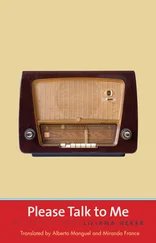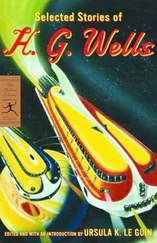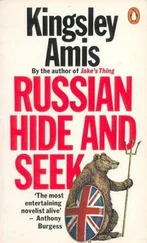Six heavy cruisers, fourteen light cruisers, sixty-six destroyers and nearly one hundred other craft, including a sufficiency of tankers for refuelling purposes, accompanied the capital ships.
Divided into four forces under vice-admirals, this unparalleled armada set its course due east. It passed hundreds of miles to the north of the main Pacific base of the US Navy at Pearl Harbor, the objective of an earlier strike plan now superseded. The change of plan had been largely the personal doing of Yamamoto, who had never wavered in his conviction that Japan could only hope to defeat America in a short war, the shorter the better.
Thanks to miracles of organization and the most rigid security, the Grand Fleet assembled intact and on schedule off the Californian coast, far enough off to be below its horizon. The four forces maintained for the voyage across the Pacific Ocean had become two, separated by some hundreds of miles, in fact the distance between San Francisco and Los Angeles.
At first light on 11th December, the Japanese fleet commenced bombardment of these two prosperous and populous cities with every gun that could be brought to bear, while every aeroplane capable of flight took off on bombing and strafing missions into their harbours and business and residential quarters. Complete surprise was attained. Of the initial salvoes, one heavy shell struck almost the precise centre of what was at that time the longest single-span suspension bridge in the world, opened only four years earlier, the Golden Gate Bridge at the entrance to San Francisco harbour. The bridge sustained great damage and there was some loss of life.
After a prearranged interval, the two forces ceased fire, turned into line abeam and steamed inshore, a change of location designed partly to permit greater accuracy and to conserve aircraft fuel, but also, at least as important, to leave the helpless citizens in no doubt of who and what it was that brought them destruction and death. The ships of the battle-fleet went to their new stations and recommenced bombardment, whether of the cities themselves or of shipping and harbour and other installations. The aerial attacks had continued without pause.
Shortly before 10.00 hours a tender or other small boat was observed approaching the waterborne forces bearing a rough-and-ready white flag. This impudent excursion, which could have claimed nothing conceivable in the way of legal standing or significance, was swiftly and properly dealt with. On orders of the Admiral himself, the destroyer Shimakaze closed with the intruder at top speed and rammed her amidships, cutting her clean in two. The remnants rapidly sank, those persons who had survived the impact being helped on their way by small-arms fire and grenades from Shimakaze ’s deck.
By then or soon afterwards, large parts of both cities and their outskirts were ablaze. Visibility on this clear, sunny winter’s morning had at first been excellent; now heavy clouds of smoke drifted across the target and ascended hundreds of feet into the air. Massive explosions occurred at intervals. One especially severe and prolonged disturbance in the San Francisco area has been taken to indicate a seismic shock induced by the bombardment in an area notoriously subject to earthquakes, but material evidence is lacking.
Despite increasing difficulties of ranging and targeting, the Japanese warships and warplanes prolonged their assault on the two coastal cities until breaking off the action shortly before noon. Already large parts of the afflicted areas had been destroyed, and hundreds of thousands of their people lay buried in the rubble or lay dead or dying in what had been their streets. Sentimentalists have suggested that the attack was needlessly prolonged and excessive damage and slaughter inflicted, perhaps forgetting the first objective of the Californian operation, viz. the delivery of the maximum possible shock, not only locally but throughout the United States. It could be asserted with some confidence, in the light of subsequent events, that those Americans who lost their lives in and around Los Angeles and San Francisco did so, albeit unknowingly, in the service of their country.
When the cease-fire came and all aircraft were safely returned, the fleet drew off. The whole of it with one exception began the long voyage home across the Pacific under the command of Vice-Admiral S. Toyoda. The exception, the giant battleship Yamato , whose ammunition had been conserved, started off on her way to a fresh target some 3,500 miles to the south-east, a target of such importance that Admiral Yamamoto had insisted on attending to it personally.
The naval forces assaulting the Californian cities had met with negligible resistance. A number of obsolete US warplanes made feeble, uncoordinated attempts to close with the vastly superior Japanese aerial armament, but in almost all cases these were shot out of the sky at ranges too great for them to return effective fire. Even considered solely by the standards of warlike profit and loss, the Pacific operation was the most successful in history.
II — The Atlantic Operation
Twenty-one hours in real time after the Japanese had launched their first attack, at first light on 12th December, the German battleship Tirpitz , having eluded the vigilance of the Royal Navy in slipping out of European cover and crossing the Atlantic, commenced bombardment of the city of New York.
At 41,700 tons and with eight 16-inch guns as primary armament, Tirpitz was clearly a ship on a rather smaller scale than the mighty Yamato , and hers was a solitary adventure; nevertheless the damage and loss of life she inflicted were considerable and bore closely upon events.
Tirpitz concentrated her fire on the island borough of Manhattan, though she caused some damage to the US Navy Yard on the farther side of the East River. Her shells destroyed or severely damaged several of the city’s loftier buildings, including the 102-storey Empire State Building. Two considerable fires were started. At a later stage, making up in boldness for what she lacked in firepower, Tirpitz actually sailed some distance up the Hudson, bombarding the shore at point-blank range with every gun available. A salvo from her secondary armament of 5.9-inch guns reduced the famous Statue of Liberty to fragments.
Amid growing but still largely ineffectual signs of resistance, Tirpitz discontinued the action just before 09.00 hours and retired. Out in the North Atlantic once again she turned southward, her mission in that ocean not yet accomplished. While in transit she successively launched from her catapult the four aircraft she carried, each of them an Arado 196A-3 twin-float seaplane carrying two 110-pound bombs. The two-man crews had been carefully selected and intensively trained for what was perhaps the most important part of the entire Western operational sector.
It had been decided with some reluctance that a regular naval attack on Washington, DC, though infinitely tempting, must be ruled out as too hazardous. Approach via the Potomac River or the Chesapeake Bay was finally rejected as too difficult and remote, with a risk that the encroaching force might be trapped and destroyed before it could withdraw. Such an outcome was unacceptable in view of the necessity that the enemy be denied any countervailing success, however small in proportion, on this day of his humiliation.
Accordingly, the four seaplanes delivered a short-range, low-level and deadly accurate attack on the White House on the late afternoon of a day that had filled it with Service and civilian chiefs of every description. No one who witnessed it would ever forget the unheralded approach at nearly one hundred yards per second of a warplane flaunting the insignia of a distant but hostile Power and firing a machine gun as it came. The story goes that one such round, penetrating a conference room by its shattered window, struck the wheelchair in which President Franklin D. Roosevelt sat and, ricocheting, hit and killed an air-force general standing behind him. Whether literally true or not, the supposed incident has great metaphorical force.
Читать дальше












